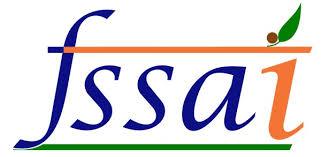FSSAI on Food packing materials.
Food is packed into a large variety of containers made from four materials, e.g. paper & cardboard, plastics, metals, glass and combinations thereof. These have to fulfill several criteria mainly in order to preserve the food, extend its shelve-life and maintain its quality with respect to freshness, taste, flavor, color etc. A major role of FPMs is the avoidance of risks related to microbial or chemical contamination of the food, i.e. unwanted events, which may imply serious health risks.
The transfer of chemical contaminants from food contact materials into food is called migration. In fact, food contact materials are an underestimated source of chemical food contamination. The extent to which migration occurs depends on various factors like physico-chemical properties of the migrant, of the packaging material, and the food (e.g. fat content); temperature; storage time; and size of the packaging in proportion to the foodstuff volume (smaller size packaging has a larger surface to volume ratio). The types of chemicals that can migrate from packaging into food are highly diverse and depend on the type of packaging material.
From plastic FPMs, the additives added to guarantee certain properties required for their function, like plasticizers, antioxidants, UV stabilizers, colors, printing inks, etc. can migrate into the packaged food. Furthermore, the residues of mono- and oligomers of the starting material(s) as well as additives required for the polymerization may also be migrated into the food.
In case of paper and paper board, printing inks and chemicals used in the pulp and paper production may migrate through paper board into dry foods.
Iron-based metal bodies are also used as FPM but usually these are coated inside with polymers to avoid direct contact with the food. Corrosion by high-salt or acidic food
5
items is a major issue, which precludes direct contact between food and metals to be feasible. Aluminum cans have to be covered with polymers as well since aluminum also is a quite corrosion-prone metal being rather unstable when coming into contact with many foods.
Chemical contaminants (or substances) migrating from FPMs can be subdivided into intentionally added substances (IAS) or migrants and non-intentionally added substances (NIAS). IAS often are directly derived from FPMs, i.e., they are identical to the FPM (metals etc.) or represent minor constituents used or are derived from the production process of the FPM such as plastic monomers, plasticizers, dyes, antioxidants etc. NIAS in most cases are compounds, which have not been added intentionally to the FPM during the manufacturing process of the FPM or have been added to a portion of the FPM not thought to come into contact with the food. Migration of components into foods has been identified as a major route of human exposure to FPMs and/or their components. more















